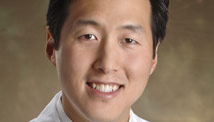Weight loss 'sleeve' a good option?
Every weekday, a CNNHealth expert doctor answers a viewer question. On Friday, it's Dr. Melina Jampolis, a physician nutrition specialist.
Question asked by Lynn C. of Madison, Ohio
I have had a weight problem for 23 years. I have lost and regained over 400 pounds. My weight-loss doctor is offering the "sleeve." I have been told because of my gastroesophageal reflux disease that the Lap Band is not an option, nor is the more well-known gastric bypass because of a high family history of cancer.
I have all the problems common in morbidly obese people, some I had even when thin. High, difficult-to-control blood sugar, blood pressure and a mild heart issue controlled by meds. The sleeve has been done only a few years - can it be a good option for me?
Expert answer:
Expert answer:
Hi Lynn. Although I'm a nutrition doctor and I focus on weight loss through lifestyle measures such as diet and exercise, I realize that sustained major weight loss is not always achievable and that surgical intervention, particularly when patients have obesity-related diseases like high blood pressure and diabetes, can be lifesaving and life changing.
Since I am not a bariatric (weight loss) surgeon, I turned to Dr. Kai Nishi, a highly respected bariatric surgeon at the Khalili Center for Bariatric Care in Beverly Hills.
He agreed that Lap Band may not be the best option if you have GERD as it could worsen symptoms.
However, if your GERD is due to a hiatal hernia, this could be repaired at the same time that your band is placed and your GERD could potentially be cured. Gastric bypass surgery is an anti-reflux surgery and in many cases can cure GERD.
Regarding your family history of cancer, the only type of cancer that would make gastric bypass surgery not an option is stomach cancer.
If you have a family history of other types of cancer including colon, lung, breast and prostate, this type of surgery, which has been around for longer than the newer sleeve procedure and thus physicians have more experience with the procedure and there is more research into the risks and benefits, would still be an option (the best option according to Nishi.)
The sleeve gastrectomy is a surgery in which 85% of your stomach is removed so you are left with just a tube for a stomach. Gastric bypass surgery also cuts the stomach, but it creates a new smaller pouch, about the size of an egg, which is attached to the second part of the small intestine.
This can lead to more nutrient absorption issues than the sleeve but it can also lead to better weight loss. With the sleeve procedure, results show 50-60% excess body weight loss at one year vs. 65-70% with gastric bypass and 45-50% with gastric band.
Excess body weight loss, or EBWL, refers to the percent excess weight a person begins with. If you are 100 pounds overweight and you lost 50 pounds that would be a 50% EBWL.
Weight-loss surgery in general leads to a 70-80% resolution of diabetes and 50% resolution of high blood pressure, with better results for both conditions with gastric bypass (because the sleeve is a newer procedure less data are available).
So if your weight-loss surgeon, who is fully aware of all of your medical history and issues, feels that the sleeve is the best option, and you truly do not believe that you are capable of maintaining weight loss permanently through lifestyle measures, (losing even 10% of your excess body weight can make a significant health difference), then I think the sleeve could be a good option for you.
If you do go forward with any type of weight-loss surgery, make sure that you have an adequate support system in place. It is still critical that you permanently adopt a healthy lifestyle including regular exercise and good food choices after the operation.
Follow Dr. Melina on Twitter.





















